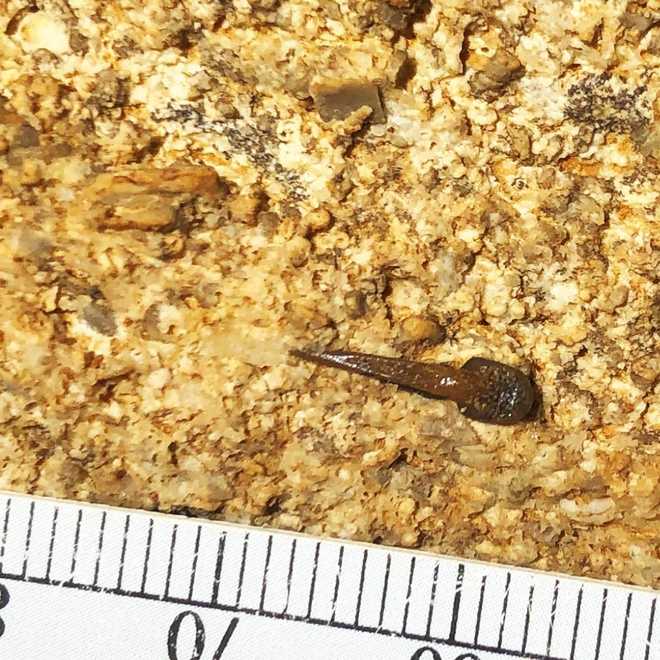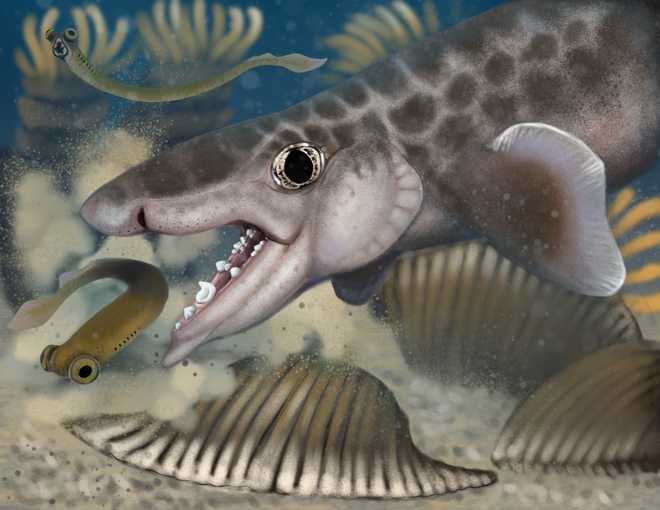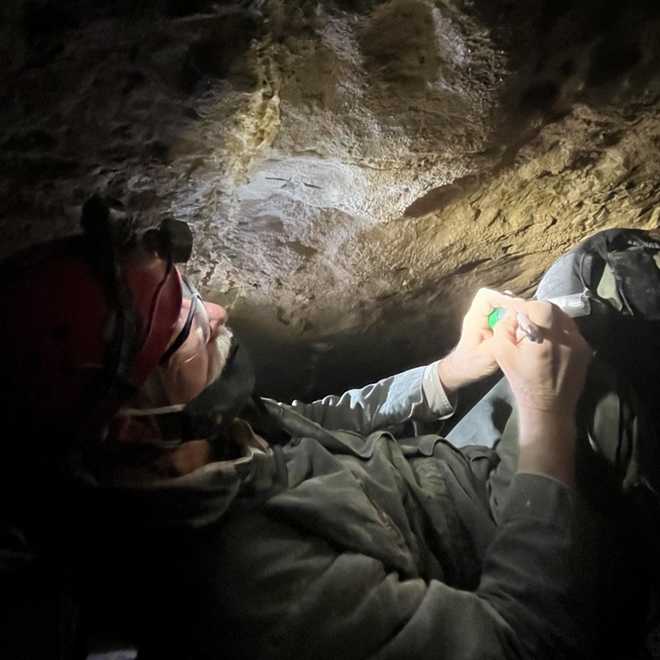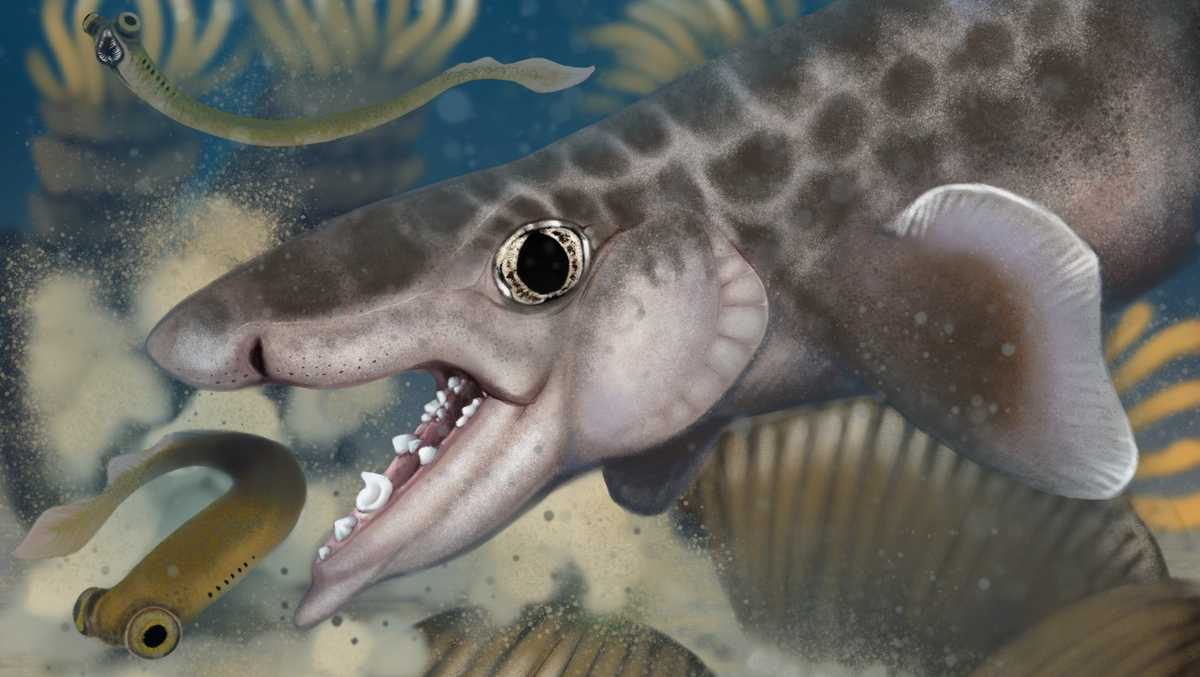It’s Shark Week, and Mammoth Cave took the unofficial holiday to announce the discovery of another new shark species. Mammoth Cave announced the discovery of the “Macadens olsoni” Thursday. The fossil, a small shark tooth, dates back about 335 to 340 million years, when Mammoth Cave, the world’s longest known cave system, was underwater. This marks the 5th “new to science” shark species identified in the cave system since 2019.Where was the fossil found?Park researchers discovered the Macadens olsoni in the Ste. Genevieve Formation rock layer, which is not open to the public. According to the Mammoth Cave National Park Facebook post, the fossil was found in 2020, but it was not identified and announced to the public until now.This is where at least some of the other species have been found.This shark fossil was within the walls of the cave and the cave climate protected it from wind, rain and harsh temperatures. What did the shark look like?Scientists estimate it grew to less than a foot. It can be recognized by its “tooth whorl,” a curved row of teeth that was designed for crushing small creatures. The tooth whorl was used to eat mollusks and worms in the water. What does the name “Macadens Olsoni” mean?The name Macadens olsoni pays homage to Mammoth Cave and Rickard Olson. Olson is a retired park scientist who we’re told was crucial in documenting shark fossils in Mammoth Cave for the Paleontological Resource Inventory. Who discovered the new species?A team of scientists from the National Park Service Paleontology Program, Mammoth Cave National Park and the Smithsonian Paleobiology Department conducted research on this new species. The research is part of the Paleontological Resource Inventory, which began in 2019. What else have they found in the cave?Throughout the inventory, Mammoth Cave officials said they realized that the cave system is a geological time capsule for prehistoric and ancient species. Since the inventory began in 2019, Mammoth cave says at least 70 species of ancient shark and fish have been discovered. Molly Schroer, public information officer for Mammoth Cave, said that the shark discoveries help piece together shark evolution, building up to what we know today about sharks. In addition to sharks and fish, Mammoth Cave houses coral fossils, other sea creatures and mammals. Mammoth Cave National Park says this discovery further highlights the park’s rich and diverse history of paleontological finds, which includes five shark species that are new to science.
MAMMOTH CAVE, Ky. —
It’s Shark Week, and Mammoth Cave took the unofficial holiday to announce the discovery of another new shark species.
Mammoth Cave announced the discovery of the “Macadens olsoni” Thursday.
The fossil, a small shark tooth, dates back about 335 to 340 million years, when Mammoth Cave, the world’s longest known cave system, was underwater.
This marks the 5th “new to science” shark species identified in the cave system since 2019.
Where was the fossil found?
Park researchers discovered the Macadens olsoni in the Ste. Genevieve Formation rock layer, which is not open to the public.
According to the Mammoth Cave National Park Facebook post, the fossil was found in 2020, but it was not identified and announced to the public until now.

Mammoth Cave National Park
This is where at least some of the other species have been found.
This shark fossil was within the walls of the cave and the cave climate protected it from wind, rain and harsh temperatures.
What did the shark look like?

Illustration by artist Benji Paysnoe
Scientists estimate it grew to less than a foot.
It can be recognized by its “tooth whorl,” a curved row of teeth that was designed for crushing small creatures.
The tooth whorl was used to eat mollusks and worms in the water.
What does the name “Macadens Olsoni” mean?
The name Macadens olsoni pays homage to Mammoth Cave and Rickard Olson.

Mammoth Cave National Park
Olson is a retired park scientist who we’re told was crucial in documenting shark fossils in Mammoth Cave for the Paleontological Resource Inventory.
Who discovered the new species?
A team of scientists from the National Park Service Paleontology Program, Mammoth Cave National Park and the Smithsonian Paleobiology Department conducted research on this new species.
The research is part of the Paleontological Resource Inventory, which began in 2019.
What else have they found in the cave?
Throughout the inventory, Mammoth Cave officials said they realized that the cave system is a geological time capsule for prehistoric and ancient species.
Since the inventory began in 2019, Mammoth cave says at least 70 species of ancient shark and fish have been discovered.
Molly Schroer, public information officer for Mammoth Cave, said that the shark discoveries help piece together shark evolution, building up to what we know today about sharks.
In addition to sharks and fish, Mammoth Cave houses coral fossils, other sea creatures and mammals.
Mammoth Cave National Park says this discovery further highlights the park’s rich and diverse history of paleontological finds, which includes five shark species that are new to science.
